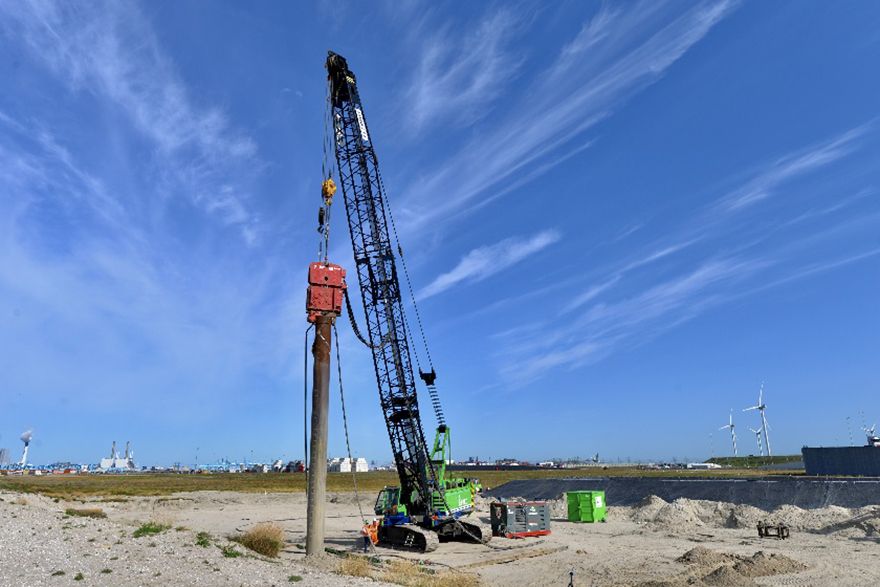
Dutch installation specialist,
GBM Works is developing a new method to reduce the noise pollution caused by driving foundation piles for wind turbines into the seabed. It involves fluidising the seabed with water jets, which ensures the monopiles sink much quicker — and with significantly less noise — under their own weight.
To assess this new system at its Maasvlakte test site, trials were recently carried out to measure the monopiles’ vibrations and deformations using strain gauges, supplied by
HBK (Hottinger Brüel & Kjær), a provider of integrated test, measurement, control and simulation solutions.
Ben Arntz, founder and director of GBM Works said: “Driving foundation piles for wind turbines into the seabed causes vibrations, pressure waves and a great deal of noise. When a steel foundation pile with a diameter of 8m is driven, the noise production can reach a level up to 180 decibels.
“The vibrations, the pressure waves and the loud noise have a negative effect on sea life. Therefore, regulations have been adopted to reduce the noise production of piledriving activities at sea. International guidelines are expected to become stricter in the coming years and our new method addresses this.”
Mr Arntz added: “On the inside of the pile, dozens of water jets spray seawater into the seabed. As a result, the seabed takes on properties comparable to those of quicksand. The resistance of the seabed decreases and the foundation pile quickly sinks in.
“The second part of the equation is a vibratory hammer that replaces the traditional hydraulic piledriving rig, which is a steel pile hammer that strikes a foundation, made from the same material, which produces a great deal of noise. The solution consists of rotating disks mounted on top of the monopile which cause it to vibrate and helps it to sink into the fluidised seabed layer.”
To assess the operation of the system and demonstrate the added value of the new method in practice, a series of tests was conducted at the Maasvlakte in September last year.
“The aim was, among other things, to collect information on the vibrations that arise, the water pressure that is needed, the behaviour of the soil and the effect on noise damping. In all, 62 test installations were executed with four set-ups — two with the jet gun system and the vibratory hammer and two tests with the vibratory hammer alone on the same foundation piles.
“To measure the strain in the monopiles GBM Works chose to use strain gauges from HBK. These strain gauges are often used to monitor wind turbines. When you exert pressure on steel monopiles, deformation occurs, and vibrations arise that cause noise. We measured those vibrations and also got some interesting information on fatigue in the foundation piles.”
Wouter Verschueren, GBM Works data and model engineer, said: “Most of the data has now been analysed. We saw, for example, that the foundation piles with the vibratory hammer alone penetrated the ground no further than 3 or 4m because the soil resistance became too high.
“With the jet gun and the vibratory hammer, the piles easily went to a depth of 10m, while the speed at constant force quadrupled. In a subsequent test cycle underwater, the noise production of the solution with the vibratory hammer and the jet gun will be compared to that of a traditional pile hammer.
“A pile driving rig in combination with a sound mitigation system is currently used. These are complex systems that operate with an underwater shield around the foundation pile to damp the vibrations and noise. GBM Works expects a noise reduction of 90 to 95% thanks to the new system.”
It was recently announced that GBM Works will be granted a subsidy of 1.8 million euros by the RVO (Netherlands Enterprise Agency) for the development of a prototype of the equipment.